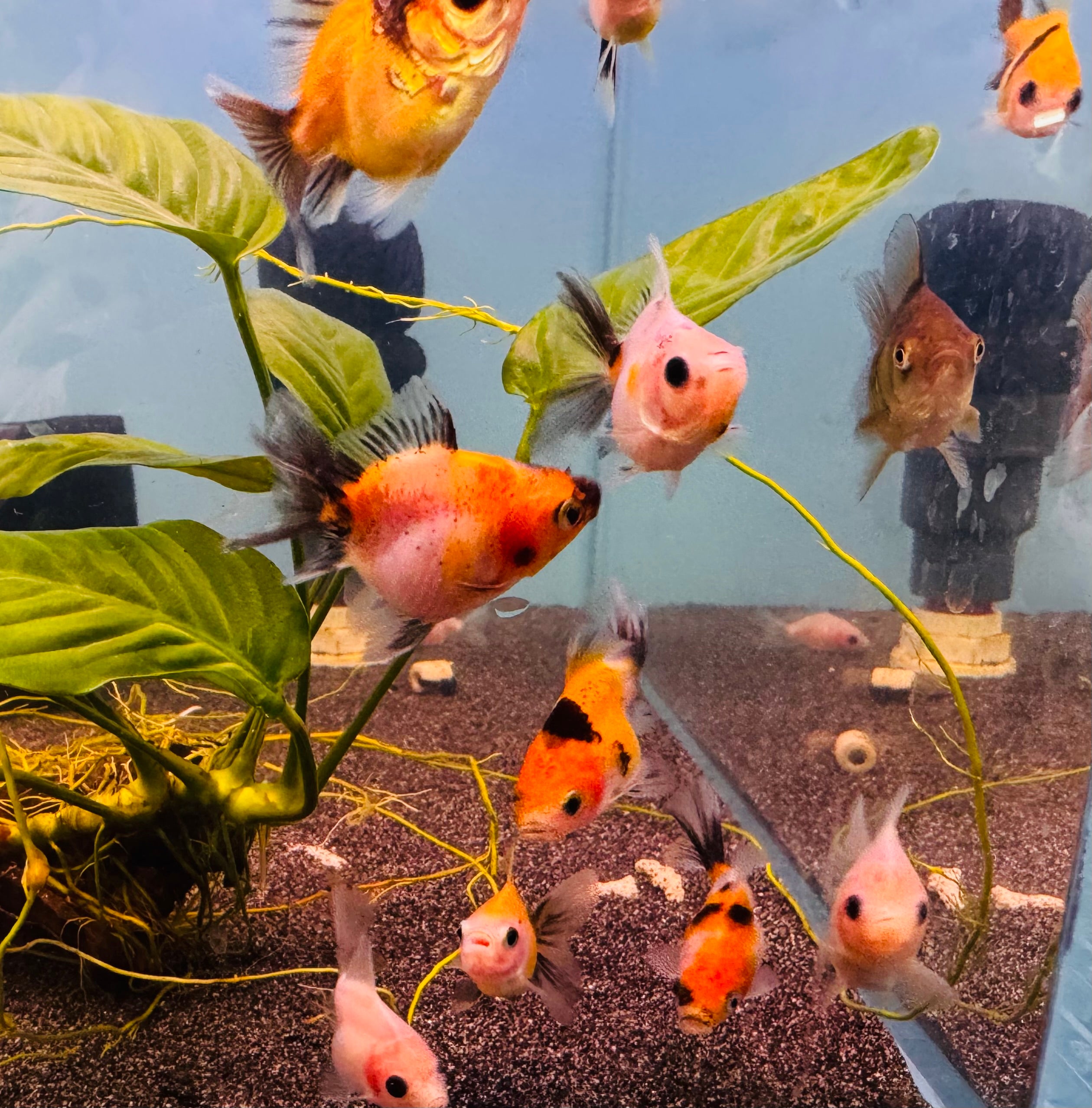Gold Fish - Oranda
Guarantee Safe Checkout

Gold Fish - Oranda
Selling size: 3-4 cm young gold fish
The oranda has many variations. This variety can be a bit confusing and makes people think they are different species. You only need to look through the photos in this article to get a feel for the many different variations.
Orandas are easily recognized by their cap (a series of outgrowths on their head). The cap is a distinctive feature of this species and is also known as the ‘wen’. This usually doesn’t fully develop until they are around 2 years old.
This species of fancy Goldfish has a huge variety in color: black, red, black with white dots, blue, black with grey gradient, red with orange-yellowish spots, white and many others.
Outgrowths cover its entire head, except for the eyes and the mouth. The size and the ‘richness’ of the cap depends on their living conditions. Their eyes are large and usually slightly protrude above the cap.
What should be mentioned is that the length of their body is only 30% percent larger than its width. That makes the fish appear very round or bubble-like, almost spherical.
Their dorsal fin is big and unpaired, the sole unpaired fin. The caudal fin is merged and resembles beautifully intertwined silk threads. It’s also very large – nearly two thirds of the body length. Their scales are large and closely packed. They form beautiful patterns that are clearly visible.
Oranda goldfish reach about 7 inches in length. However some specimens can get even larger depending on the environment they’re living in. Here are a few of the most popular varieties of Oranda Goldfish:
Oranda Goldfish belong to the Cyprinidae family and are believed to have originated in China; there are even earlier mentions going back to 15th century. Its origins are still under debate, but the majority of taxonomists agree that these fish are a product of crossbreeding.
On average they live for 15 years but under good aquarium conditions, they can live longer. Good aquarium conditions is a collective term and few people have a good understanding of what it actually is, so take a moment to familiarize yourself with some golden beginner rules.
- Species – Carassius Auratus (Oranda)
- Common Name – Panda Oranda
- Origin – East Asia
- Diet – Herbivour
- PH Range – Alkaline 6.5 – 7.5
- Water Type – Hard
- Temperature – 10-24
- Breed Type – Egg Scatter
- Max Size – approximately 30cm
- Sex – Un-sexed
Limited Quantity Available - Will Sell out Fast!
Note:
We can’t ship Livestock and Live Plants to WA and TAS due to State Restrictions. Kindly check out our DOA and other policies before purchase!!
What to Expect from Us
All Aquatic plants and animals come with a 100% live arrival guarantee!!

| Quantity |
1 Oranda 3cm, 3 oranda juvies |
|---|



